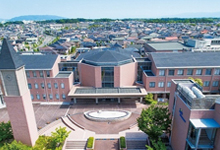Ayaka Awaji, a fourth-year student in the Department of Physical Therapy at Kio University, Ken Fuchigami, a visiting researcher at the same university, and Professor Shu Morioka are using kinetic friction to rehabilitate patients whose upper limb motor function has stalled due to sensorimotor dysfunction after a stroke. They used a wearable device that can feed back information in real time and reported the results. The patient's stagnant upper limb function recovered, and we discovered the effectiveness of rehabilitation intervention using sensory generation based on dynamic friction information.
Visual stimulation, electrical stimulation, and auditory stimulation are used to rehabilitate sensorimotor dysfunction in paralyzed fingers after a stroke. Friction (dynamic friction) information cannot be fed back in real time.
Therefore, in this study, we used a wearable device that can feed back dynamic friction information in real time and verified its effectiveness in rehabilitation intervention for patients with post-stroke sensorimotor dysfunction and stagnant recovery of upper limb function.
The patient, a man in his 70s, had been undergoing rehabilitation for more than two hours every day for a month, but recovery from his paralysis had stalled and he was still causing objects to fall when he manipulated them. We used a device that acquires tactile information when an object is touched from a tactile sensor attached to the paralyzed finger, converts it into vibration, and transmits it from a vibrator attached to the collarbone. He performed the 2-Hole Peg Test, a rehabilitation process in which a peg is placed from a dish into nine holes and then placed back into the dish, for a total of 1 days, with the device worn on days 9 to 9.
As a result, the patient's upper limb motor function, which had been stagnant until then, improved over time, and both the excessive pinching movements associated with grasping objects and the frequency of dropping objects decreased. On the 6th to 10th day after using the wearable device, the patient said, ``I could feel my hands and fingers,'' and on the 11th to 15th day after that, despite not having the wearable device, ``I couldn't feel my own movements.'' I understand, now I can do it without looking at it (the object).''
The above results suggest that rehabilitation intervention using perceptual generation using dynamic friction information may be a new treatment strategy for sensorimotor dysfunction in the fingers after stroke.
Paper information:【Cureus】Effects of Vibration-Based Generation of Timing of Tactile Perception on Upper Limb Function After Stroke: A Case Study

